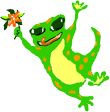
|
|
|
|
|
Jack the Lizard is on YouTube |

|
Pooh still going |
|
Animals eat food and digest it, absorb its nutrients, then eject residues as feces. Since animals cannot take all nutrients out of food, their feces still have lots of energy in it. Some feces may still have 50 % of energy that the original food contained. Feces are not waste. |
Pooh Eater
|
Some animals eat their own excrement. Since Capybara and rabbits cannot digest food completely, they need to extract the nutrition by eating their own feces. Some animals such as elephants, pandas and koalas feed on their mothers’ feces when they are young. There are the bacteria that help their host to obtain the nutrients from plants. Mother elephants and the others can pass those bacteria to their young through their feces. |

|

Lion dung is used for keeping rabbits off the gardens. It also gets deer avoiding rails. In England lion dung scares otters away from commercial fishing lakes. Those animals might detect some chemical that are found in the feces of predator. |
The Story of Pooh

|
From a human point of view, feces contain lots of information on animals. You can guess how large or small animals are from its size. The contents of feces also show what animals ate and kinds of material they could not digest. The color and shape of feces tell the condition of animal health. Zoos and other institutions examine the hormones in animal feces to determine whether animals are ready to breed or not. |
Pooh Building
|
Some people use dried cow or bison dung as fuel or as the material for their houses. In India cow dung is also applied to wall as the insect repellent. Since elephant dung consists of fibers, it is recycled as paper material in Thailand. The dung of other animals such as rhino, kangaroo and donkey is also used to make paper products. |

|